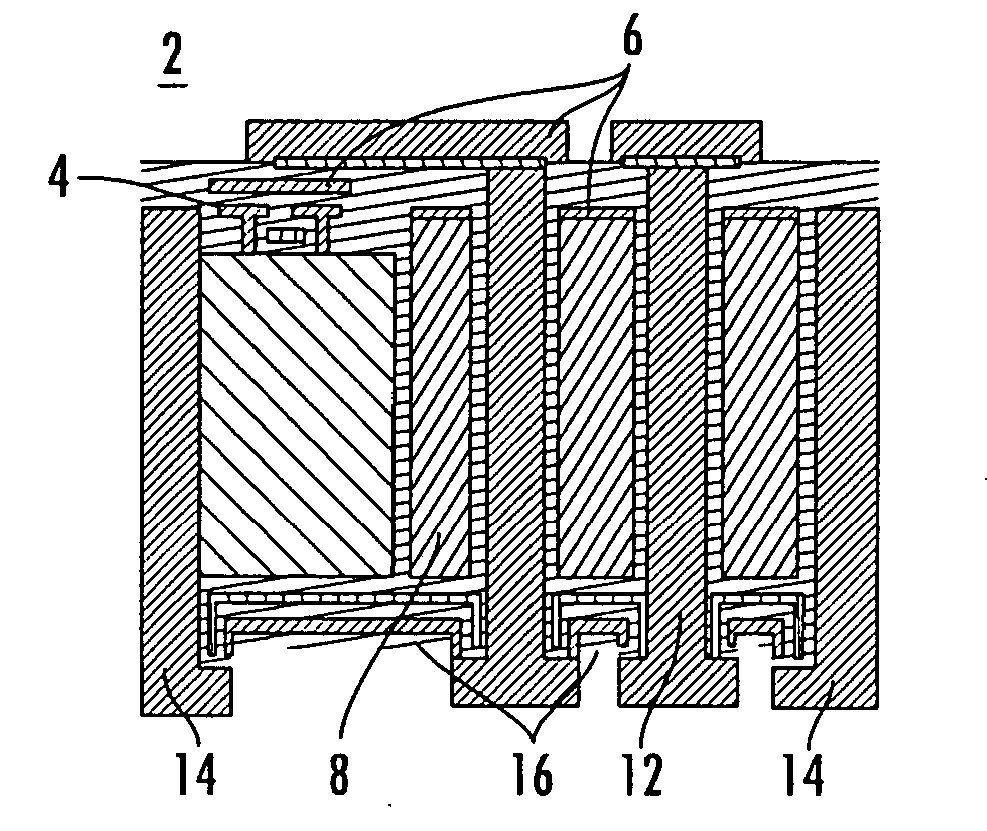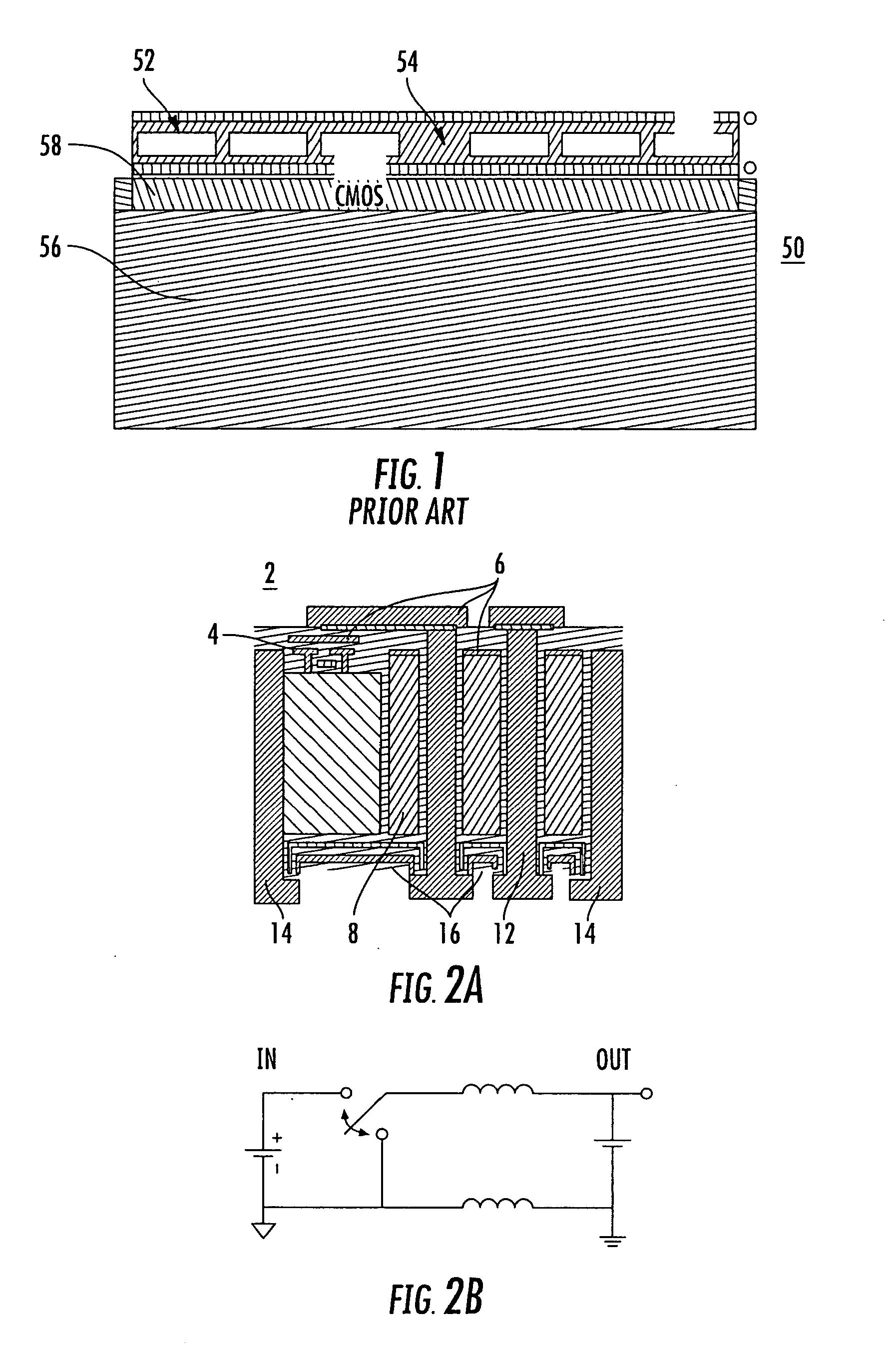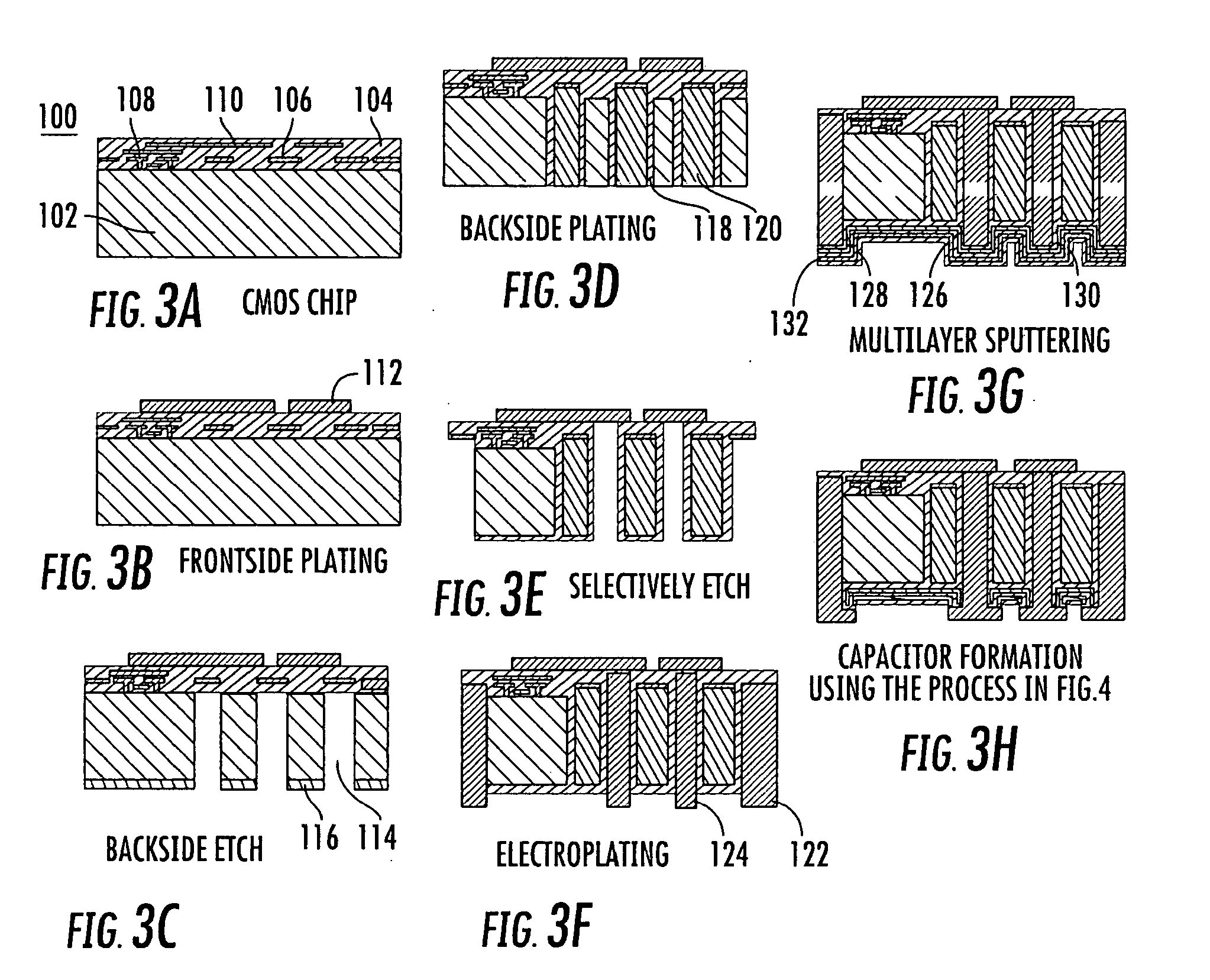Integrated Power Passives
a technology of integrated devices and power passives, which is applied in the manufacture of capacitors, semiconductor/solid-state devices, printed circuit non-printed electric components, etc., can solve the problems of mechanical robustness, limit the achievable, and no known practical fabrication techniques for fabricating power passives with high energy density. achieve the effect of high capacitance and aid in heat dissipation
- Summary
- Abstract
- Description
- Claims
- Application Information
AI Technical Summary
Benefits of technology
Problems solved by technology
Method used
Image
Examples
Embodiment Construction
[0018]The invention involves a new fabrication process and associated devices that are CMOS-compatible and enable monolithic integration of high-Q, high-inductance, high-current-handling inductors and high-density capacitance capacitors, such as for power electronic circuits. The invention is enabled by a novel process to prepare a multilayer film-stack such that a stack of conducting layers separated by dielectric layers are formed over a substrate having one or more elevated plateaus above a surface of the substrate and upon removing a portion of the layers generally to about the surface of at least one of the plateaus, which permits the selective addressing of conducting layers. Selective addressing as used herein is the connection of some but not all of the conductive layers. For very thin layers, selective addressing can be carried out by using two or more different conducting layers and selectively etching one or more of the conducting layers and effectively filling the volume...
PUM
 Login to View More
Login to View More Abstract
Description
Claims
Application Information
 Login to View More
Login to View More - R&D
- Intellectual Property
- Life Sciences
- Materials
- Tech Scout
- Unparalleled Data Quality
- Higher Quality Content
- 60% Fewer Hallucinations
Browse by: Latest US Patents, China's latest patents, Technical Efficacy Thesaurus, Application Domain, Technology Topic, Popular Technical Reports.
© 2025 PatSnap. All rights reserved.Legal|Privacy policy|Modern Slavery Act Transparency Statement|Sitemap|About US| Contact US: help@patsnap.com



